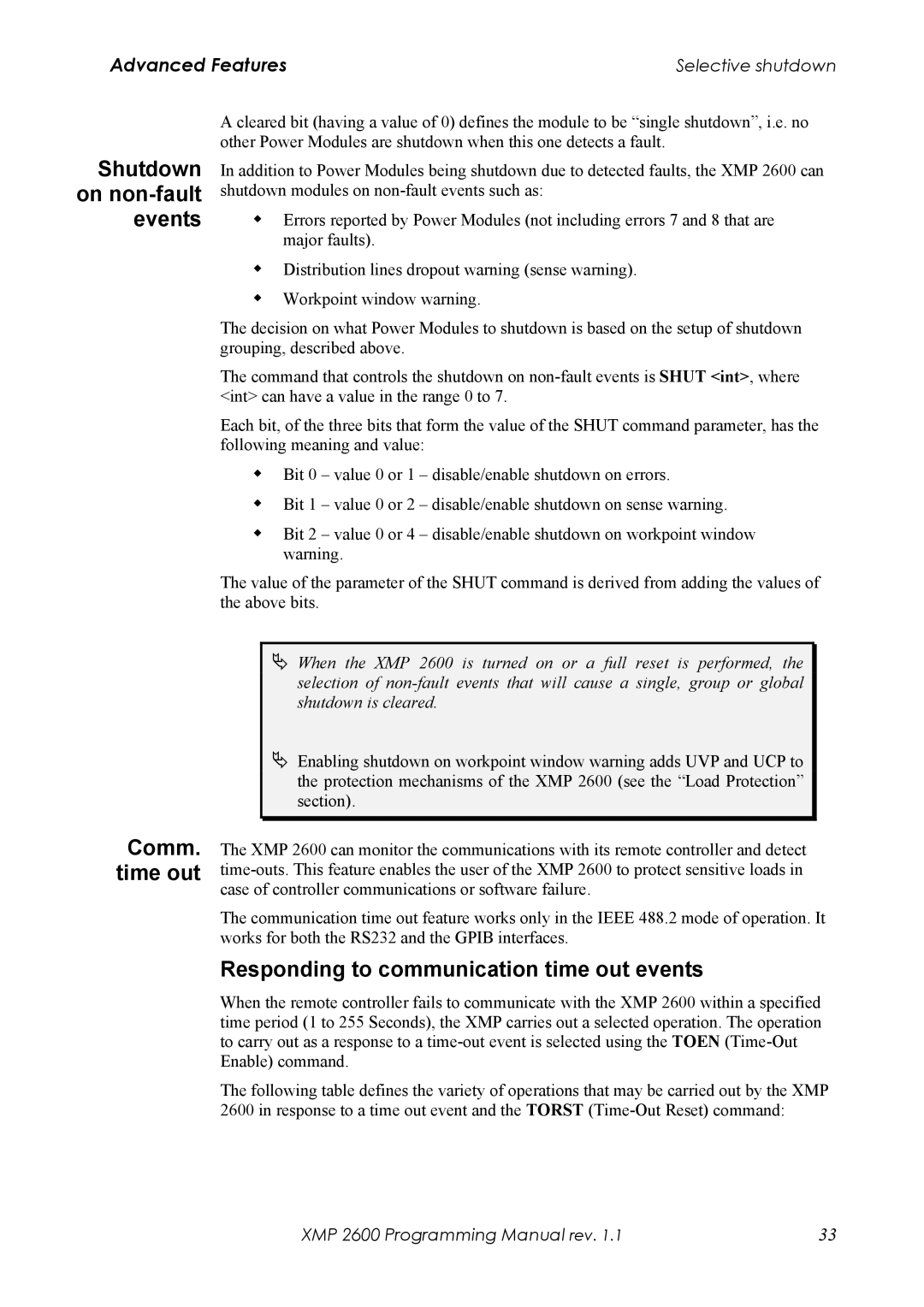
Advanced Features | Selective shutdown |
Shutdown on non-fault events
A cleared bit (having a value of 0) defines the module to be “single shutdown”, i.e. no other Power Modules are shutdown when this one detects a fault.
In addition to Power Modules being shutdown due to detected faults, the XMP 2600 can shutdown modules on
Errors reported by Power Modules (not including errors 7 and 8 that are major faults).
Distribution lines dropout warning (sense warning). Workpoint window warning.
The decision on what Power Modules to shutdown is based on the setup of shutdown grouping, described above.
The command that controls the shutdown on
Each bit, of the three bits that form the value of the SHUT command parameter, has the following meaning and value:
Bit 0 – value 0 or 1 – disable/enable shutdown on errors.
Bit 1 – value 0 or 2 – disable/enable shutdown on sense warning.
Bit 2 – value 0 or 4 – disable/enable shutdown on workpoint window warning.
The value of the parameter of the SHUT command is derived from adding the values of the above bits.
Comm. time out
When the XMP 2600 is turned on or a full reset is performed, the selection of
Enabling shutdown on workpoint window warning adds UVP and UCP to the protection mechanisms of the XMP 2600 (see the “Load Protection” section).
The XMP 2600 can monitor the communications with its remote controller and detect
The communication time out feature works only in the IEEE 488.2 mode of operation. It works for both the RS232 and the GPIB interfaces.
Responding to communication time out events
When the remote controller fails to communicate with the XMP 2600 within a specified time period (1 to 255 Seconds), the XMP carries out a selected operation. The operation to carry out as a response to a
The following table defines the variety of operations that may be carried out by the XMP
2600 in response to a time out event and the TORST
XMP 2600 Programming Manual rev. 1.1 | 33 |
